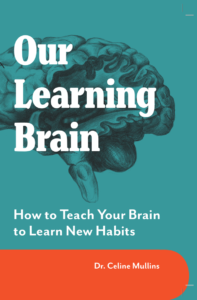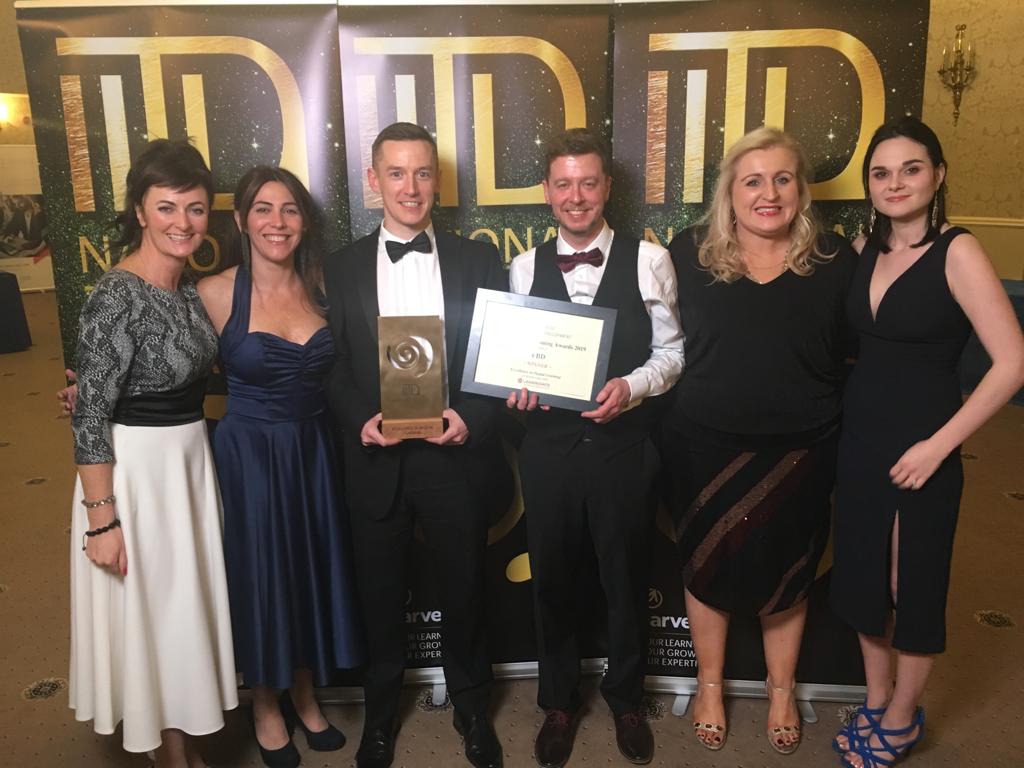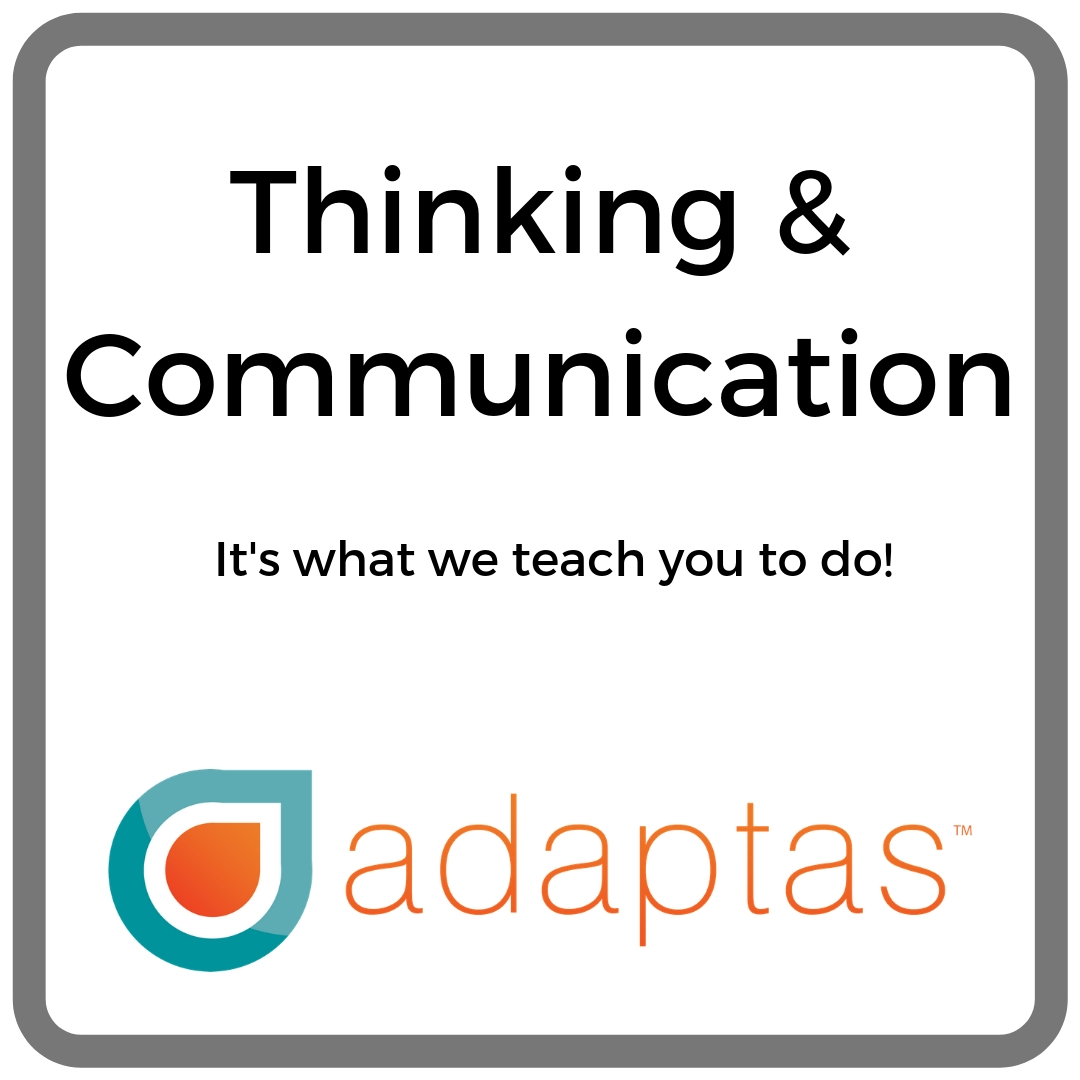Update August 3rd 2023
“Leadership is a way of thinking, a way of acting and, most importantly, a way of communicating”
Simon Sinek
Business Solver’s 2018 State of the Workplace Empathy report states that 87% of CEO’s agree that a company’s financial performance is tied to empathy.
Further solidifying the focus on right-brain development, LinkedIn’s 2018 workplace report headlines that talent developers, executives and people managers agree that the development of soft skills is the top priority for talent development teams. Training in leadership, communication and collaboration are each rated as more important than role-specific skills.
As recently as ten years ago, an article on empathy in the workplace would have been too touchy-feely for most CEOs to take seriously. But it is now universally recognised as a vital workplace value that is at the heart of a strong company culture. It encourages collaboration and innovation and increases retention, productivity and profit. According to LinkedIn, 96% of employees believe it is important for their leaders to show empathy.
“Power will reside with those who have strong right-brained, interpersonal qualities”
As technology and globalisation have levelled the playing field in many sectors, more and more top companies are realising that their competitive advantage lies in the personal qualities of their talent. When Daniel Goleman published his book Emotional Intelligence: Why It Can Matter More Than IQ, in 1995, this concept was new. It has since been widely accepted that the so-called softer skills lead to tangible results and are now seen as a priority for executives—often the defining mark of a true leader.
Dublin’s annual Pendulum Summit, whose motivational speakers promote self-empowerment and mindfulness, has grown from 600 attendees in 2013 to 7,000 in 2019, testament to how many executives recognise the place personal and interpersonal skills take in a successful career.
Bestselling author, Daniel Pink (A Whole New Mind: Moving from the Information Age to the Conceptual Age) predicts that power will reside with those who have strong right-brained, interpersonal qualities such as inventiveness, empathy, and meaning.
Leadership development has gone soft
This trend is palpable among my clients and training course participants. There have always been people who were naturally inclined to create positive working environments and in improving emotional intelligence. The current mindset shift is reverberating with leaders who would previously have charged full steam ahead in the pursuit of productivity and business objectives, despite fallout around them. They now realise that there are bigger rewards in firstly, stopping to think of the human effect at all points in the productivity chain. Where the leading edge is leaning is in recognising that the people they work with will align and perform better if they feel they are trusted, that their opinion counts and that their manager or organisation cares about them.
Putting new approaches into practice can be challenging for many of the leaders I work with. It means role-modelling ideal behaviours themselves so they can expect others to manage and lead differently. Building self-awareness and introducing new ways of operating can be hard work for some. It means letting go of long-held habits, some of which have worked well in certain ways.
The impetus to seek coaching for behaviour change often comes from a lull in performance, or a recognition that teams could be more productive. But, an initial focus on business improvements, sooner or later, turns to self-reflection. A 360-feedback exercise on their own emotional intelligence and communication style from those around them, shines a light on where they could improve. Once they believe in and feel the benefits of positive behaviour change, there’s no going back. Everyone wins.
Peter Drucker said, “The leader of the past knew how to tell; the leader of the future will know how to ask.”
The ability to analyse, think critically and take decisive action are of the utmost importance for a leader and an organisation to be successful. Being an effective leader is equally about getting the right people to work and collaborate with to build and sustain a vision and a plan. Finding and keeping good talent depends on building strong relationships; on understanding people’s needs.
We are in a time of unprecedented change in every aspect of life and especially in the working world. Companies are embracing technological disruption at a pace that’s challenging to keep up with. A more diverse workforce wants to shape career paths according to individual ambitions and needs, not structured, traditional hierarchical routes. Team collaboration is a new driving force in productivity. The leaders of the future need to develop new skills to inspire a more complex and ever-evolving working environment. They need to have well developed emotional intelligence.
A central element to emotional intelligence is empathy; the ability to identify and understand another’s situation, feelings and motives; the capacity to recognise the concerns other people have. It allows us to create bonds of trust and helps to understand how or why others are reacting to situations, informing decisions.
When teams are not communication or collaborating well, work doesn’t flow. Progress is slowed or impeded. The lack of ability to experience empathy is behind much organisational bullying, employee distress and failure to sell to and retain clients. This doesn’t always mean that leaders, managers and team members are devoid of soft skills or the ability to show empathy. It can simply be that they are not versed in how to apply them effectively with colleagues and reports when there are so many goals, objectives, processes and personalities.
When communication is free-flowing, productivity is free-flowing
It may seem obvious, but an employee’s well-being and happiness plays an important role in the
performance of an organisation. The results of numerous studies prove a relationship between employee happiness and workplace engagement. Happy and engaged workers are more likely to have positive relationships with their managers and are better able to handle new challenges and changes. They also feel valued by their employer, can deal with stress more effectively and are more satisfied with their lives overall.
Instead of having open and honest conversations, many managers skirt around issues that should be discussed, allow others to ‘tell’ people what to do and miss an opportunity to let individuals take ownership of a solution. We don’t have to be perfect communicators. Listening, asking questions to gain more understanding and avoiding assumptions and planning ahead in conversations give clear signals that open communication is important. With the number of distractions in the working environment, it takes decided focus to be present in direct interactions and to current conversations, but it pays dividends.
Steps for developing empathy and retaining key people
The ability to be emphatic is a cornerstone of successful relationships. To understand an individual’s, a group’s or a market’s needs depends on an ability to put ourselves in their shoes; to understand their perspective of the world, regardless of our differing experience, beliefs, attitudes and values.
There are now numerous studies that link empathy with increased sales and with the performance of the best managers of product development teams. When it comes to staff training and client retention, an understanding and development of empathy is imperative.
Dr. Daniel Goleman isolates three reasons why empathy is so important in business today:
- the increasing use of teams, which he refers to as “cauldrons of bubbling emotions”
- the rapid pace of globalisation (with cross cultural communication easily leading to misunderstandings)
- the growing need to retain talent.
“Leaders with empathy,” states Goleman, “do more than sympathise with people around them: they use their knowledge to improve their companies in subtle, but important ways.” This doesn’t mean that they agree with everyone’s view or try to please everybody. Rather, they “thoughtfully consider employees’ feelings, along with other factors, in the process of making intelligent decisions
For some people, forging positive, trustful connections with others comes naturally. For those who find it uncomfortable, it’s a practice that can be cultivated under the guidance of a skilled coach. Developing empathy has its own rewards: the more it’s practised, the more relationships in every area of life improve and instances of conflict dissipate. A few basic tips:
- Be fully present when you are with people. Don’t check your email, look at your watch or take phone calls when a direct report drops into your office to talk to you. Put yourself in their shoes. How would you feel if someone did that to you?
- Don’t interrupt or dismiss concerns offhand. Don’t change the subject.
- Don’t rush to give advice. It’s much more empowering to support people to realise the answers that suit them best.
- Use people’s names. Remember the names of spouses and children so you can refer to them.
- Smile at people. As well as improving relations with those around you, a bonus is a boost your own self-esteem and immune system.
- Encourage people, particularly the quiet ones, when they speak up at meetings. A simple thing like an attentive nod can boost confidence.
- Give genuine recognition and praise. Pay attention to what people are doing and catch them doing the right things. When you give praise, put a little effort into making your genuine words memorable: “You are an asset to this team because…”; “I would have missed this if you hadn’t picked it up.”; You made some very useful suggestions at the meeting, thank you for that”
- Take a personal interest in people. Show people that you care, and express genuine curiosity about their lives. Ask questions about their hobbies, their challenges, their families, their aspirations.
- Listen with full attention; note the tone of voice, body language, the context and any hidden emotions behind what’s being said.
A famous study by Professor Emeritus, Albert Mehrabian of UCLA, showed that when communicating about feelings and attitudes, words account for just 7% of the total message. The other 93% is in tone of voice, body language and more. It’s important to allow time to understand all aspects of a person’s communication.
Spirit at Work; inspiring leadership
The term Spirit at Work was coined by Kinjerski and Skrypnek in 2006 to explain feelings of well-being, meaning, fulfilment and connection while working. The most important factor that influences this spirit is inspiring leadership. Positive working environments help people to feel good during their working day, be happy with their organisations and enjoy better focus on tasks required.
Some standout leaders have a natural charisma that’s undeniably alluring. But any leader can develop an ability to inspire and engage colleagues by:
- creating a caring culture
- prioritising the welfare of their staff and working relationships
- embodying behaviours that match those of the organisations’ philosophy and intentions
- encouraging and helping staff to reach their goals
- communicating tasks clearly
- involving people in the decision-making process
- delegating responsibility so people can make their own decisions about their work.
Culture trickles down from the top. Leading by example sets the tone for positive teamwork, support for colleagues and recognition of sincere application and good performance. Pamela Quinn (MD of Kuehne + Nagel Ireland, one of the world’s largest logistic companies) says: “I believe that people mirror behaviours and they tend to naturally follow the behaviours they see around them.”
US workplace research company Gallup have been looking at employee engagement for years.
They describe an engaged employee as one who is involved in, committed to and enthusiastic about her/his work and workplace. A 2016 article by Mann & Harter illustrated that, worldwide, only 13% of employees in organisations are considered to be engaged workers.
According to a study by Arakawa & Greenberg, managers who are optimistic are more engaged and more likely to manage teams that produce better results: “…managers who currently embody positive leadership are contributing to the effectiveness of not only their employees, but also the organisation as a whole.” It also showed that managers who valued their employees’ strengths, who had a positive perspective and regularly provided recognition of accomplishments had employees who were themselves optimistic and engaged. Positive leadership and optimism lead to a company culture that benefits everyone and increase the chances of success.
There is much hard evidence to show that leaders with highly developed soft skills build organisations with the strength and flexibility to meet the challenges of the most fiercely competitive environment we’ve ever seen. It pays to invest in the less tangible attributes of leaders and their teams.
Future-proof your people. Encourage life-long learning
The only thing we can be sure of as regards the future of work is that it will be very different to what we’ve been used to. Many would argue that more changes have taken place in the past 5—10 years than had in the previous 100. There are more new technologies, new approaches to management and new roles in the workplace than ever could have been imagined.
I’ve worked with Bob Savage, MD and Vice President of DELL EMC Ireland, who is a truly inspiring leader. The Cork plant is Dell’s largest manufacturing site outside the US, spanning 600,000 square feet, with 28 business functions and 44 nationalities on site speaking 26 languages. In 2017, this centre of excellence that serves a global market was voted best place to work in Ireland based on thousands of employee reviews compiled by Indeed.
Bob says “The ability to build relationships with customers, to relate to others, is one of the differentiators for employees and companies of the future. Another differentiator is a culture which encourages people to have an openness and ability to transform their skills, with a compulsion towards life-long learning”.
When asked what he looks for in employees, he says it’s a team of dynamic players and career minded people with integrity and passion who think outside the box. “The ICT area is a fast-moving environment and people need to be able to handle and embrace change.”
Creating a company culture where continual learning and development is encouraged, valued and supported by a leader promotes a self-feeding environment of positive interaction, collaboration and idea generation. People become interested and enthusiastic about bettering themselves and buying into their company vision in unison.
John Henry Newman once said, “To live is to change, and to be perfect is to have changed often.”
Not many people like rats, but they tell us much about brains and behaviour. When rats are raised in a complex and challenging environment, their brains grow new matter. The cortex, the length of neurons, the number of synapses, and the level of neurotransmitters and growth hormones all increase.
The benefits of stimulating environments are not just reserved for the young. When adult rats are
exposed to training and enriched environments, the effects of earlier nervous system damage and
genetically based learning deficits can be ameliorated.
Although it is not possible to do such invasive research with humans, there is much evidence to
suggest that our brains react in the same manner. The brain has been shaped by evolution to adapt and readapt to an ever-changing world. The ability to learn is dependent on modification of the brain’s chemistry and architecture, in a process called “neural plasticity”. Neural plasticity reflects the ability of neurons to change their structure and relationships to one another in an experience-dependent manner according to environmental demands.
The good news for learning and development in the workplace is that current knowledge and beliefs can be changed for better or worse depending on what is focused on. Science has discovered ingenious ways to use the brain’s natural pathways and traits to instil new thinking and make it long term.
How curious are you? Leadership development can accelerate by being curious.
Children ask ‘why?’ all the time. As adults, we largely lose the habit of asking questions and the instinct to be truly curious. Do we lose our curiosity once we are embedded in formal education? Or is it too important as adults to appear like we know everything?
Many people draw conclusions easily and make assumptions about other people and about themselves. They tend to make statements when people come with problems, rather than ask questions. When we consider how the brain works there is a very good reason why, as adults, we become less curious. But it doesn’t mean it serves us well.
The prefrontal cortex, PFC, is the area that juts out of the skull at the forehead and has evolved most recently. It’s the region of the brain that filters our actions. Cognitive processes including reasoning, problem-solving, planning, carrying out new and goal-directed patterns of behaviour, inhibitory control, sustained attention and decision-making all take place here. It performs the cognitive functions that allow us to read and react to social cues in everyday interactions, to use language fluently and to regulate, or manage, our emotions.
The PFC occupies one-third of the entire human cerebral cortex and is one of the last cortical regions
to undergo full myelination, during adolescence. Before it’s fully developed, we are full of questions. Once it’s formed, delivering answers, the questions diminish. But, even when it is fully formed, as adults, it’s not a given that our decisions are the best-serving ones, for ourselves or for others.
The PFC is connected to our limbic system, where emotions and memories are housed. The processing of the interaction between the PFC and the limbic system happens unconsciously, leaving us unaware how memories and emotions are at play in decision making and problem solving.
As so much information floods our awareness every second, a brain makes shortcuts, relying on what it already knows instead of working things through. Our entire nervous system is focused on keeping us safe and does whatever it needs to do to fulfil that job, without our direct awareness, a bit like on autopilot.
Well-researched training and processes can reignite the kind of creative curiosity we knew as children. Developing a habit of looking at things with an open, curious mindset can lead to more creative decisions and engages colleagues in a way that is conducive to innovation and high performance.












